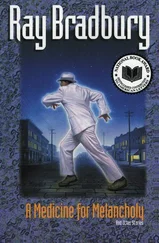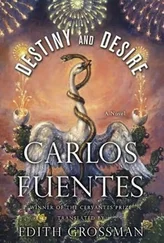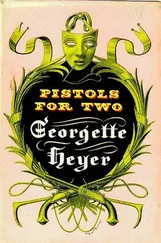Nobody had ever painted such dark skin, such a white shirt, the Adam’s apple in his throat, all so offensively exact. The weary gaze of the painter was led over all the realistic details of the painting, the cracks in the lips, the stubble of the beard, the deep blue of the background. Nothing is artificial, exclaimed the artist, nothing is artistic here, this is devilry, not its representation, this is the devil because this is pure reality, without art, he cried, possessed now by the terror that surely she and her repulsive lover, the subject of the portrait, wanted to instill in him. There is no art in this, Elisia, this is reality, this portrait is the man himself, reduced to this immobile and trapped condition, transformed into a pygmy by the art of witchcraft. This is not a painting, Elisia, what is it? the painter asked in anguish, reduced to one of her possessions, exactly as she had wanted him to be, as he read the living but motionless eyes, without art, of the man-portrait, disabused, disillusioned, despairing, disturbed, deconstructed, destroyed …
— If you paint me like this, I will let you see me naked …
— But this isn’t painting, it’s witchcraft.
— I know, silly, a witch friend gave it to me, and she told me, Elisia, you come from a flea-bitten town where the princes married to avoid losing taxes, and you will never understand what this is that I’m giving you, you must find a painter or a poet to put a name to this painting that I’m giving you because you are my most loyal pupil …
God forgive you, said the painter, imagining the horror in the triangular union of the aged witch, the young Elisia, and this man who was the devil himself in a portrait.
— But the witch said to me: Elisia, although this man is very handsome and well endowed, I warn you of one thing …
— Good advice.
— This man is not yet born, this is the portrait of someone who does not yet exist, and if you want him you are going to have to wait many years …
— Until your death!
— Then, Paco, you must make me a painting the same as this, so that my portrait and that of this man who has not yet been born can meet someday, and we can love each other, together at last, he and I.
4
He gave up the thought of painting her as he would have wanted but he wanted her as he couldn’t paint her. She was free with her favors and this famous old man amused her, he told her things she didn’t understand, he was held as much by the sexual pleasure that she knew how to give him as by the challenge that he couldn’t accept: to paint her a companion portrait to the one she had shown him and then returned to its place in her chest.
Of course, she didn’t stop seeing Romero in Seville, she returned with him to Madrid, and Goya, who in any case, had to return to “the city and court” (as Madrid is known), followed them. That was the humiliating thing. He had to return anyway, but now it appeared that he was following them. He longed for what he didn’t dare request. Something more than the careless love she gave him and the passionate love — he watched them through a keyhole — she gave the bullfighter. He was an old man, famous but old, deaf, a little blind, over seventy; his own lovers had all died or he had broken with them, or sometimes they had broken with him. But passion’s ring of flames still blazed, and in its center was a man, Francisco de Goya y Lightning, luminance, lucidity. But now he was only Paco Goya y Lucinderella.
He watched the lovers through the keyholes of his canvases. Once he even tried to sneak into the apartment of La Privada, but he could get no farther than a closed balcony where he almost fell down to Calle Redondilla and cracked his skull. Yet he managed to see something, though he couldn’t hear a thing, and they suspected nothing. But he could distinguish once again, so exalted was it, so commanding an act, the orgasmic climax of Elisia’s fainting. But not with him, with him that never happened, for him she never fainted as she was doing now, stiffening and trembling one moment and collapsing in the bullfighter’s arms the next.
Was it only with Pedro Romero that La Privada fainted? Or would people say: —Everyone made her faint with pleasure, except Francisco de Goya y Lost Sensations?
Spying on them, he would have liked to join them through a generous, possible act of communication. He imagined that it would be like carrying the Virgin in the procession. He was unable to see, under that throne, but his feet and his sense of direction told him that all the streets and lanes of Seville communicated with each other, from the Cinco Llagas Hospital to the Casa de las Dueñas to the Patio de Banderas and Huerta del Pilar and, through the tunnel beneath the Guadalquivir, to the glories of Triana. That was the law of water, universally communicating, springs with gorges and rivulets, and those with rivers, and rivers with lakes, and those with waterfalls, and the falls with the deltas and those with the ocean and the vastness of the sea with the darkness of the depths. Why should the beds of the world be any different, why shouldn’t they all communicate with one another, not a single door shut, not a single padlock or clasp, not a single obstacle to desire, to the text, the tact, the satisfaction of the bed?
He wanted the two of them — Elisia and Romero — to invite him to be part of the final, shared lust; what did it matter to them, if he was going to die before them? Romero would retire from the ring, Goya would paint the bullfighter his immortal canvas, more immortal than his immortal manner of awaiting the bull stock-still; she might die before the two men, but that would be an aberration: it would be natural that he, the painter, would die before the others and leave the painted canvas of the loves of Goya and Elisia, of Elisia and Romero, of the three together, a canvas more immortal than that fraud she showed one afternoon in Seville, between servings of cakes and candied egg yolks, which he accepted, still stuffed with ice cream, his belly swelling, about to reply to the world with a sonorous and catastrophic belch. What did it matter to them, if he was going to die before they did? Then he realized, horrified, that the portrait she showed him in Seville was an intolerable thing. A brutal reality, an incomprehensible portrait made by no one, a canvas without an artist. How could it be! Could any canvas surpass that brutal realistic fidelity that La Privada revealed to Goya, saying: —Paco, make me a portrait like this one?
Death was going to cast the three of them to the four winds before love united them. That thought was killing Goya. He was an old man and he didn’t dare ask for what he wanted. He couldn’t endure the scorn, the mockery, the simple denial. He didn’t know what Elisia whispered in Romero’s ear:
— He’s an old tightwad. He never brings me anything. He doesn’t bring me what you do, sweet things, honey and bread …
— I’ve never brought you rich things. Who are you confusing me with?
— With no one, Romero: you bring me sweet things, not sweets but sweetness, because you know I’m endearing …
— You’re a flirt, Elisia …
— But him: nothing. A tightwad, a miser. No woman can love that sort of man. He lacks those attentions. He may be a genius, but he doesn’t know anything about women. Whereas you, my treasure …
— I bring you almonds, Elisia, bitter pears and olives in oil, so you are forced to draw sweetness out of my body.
— Lover, how you talk, how you flatter, stop talking now and come here.
— Here I am, all of me, Elisia.
— I’m waiting. I’m not impatient, Romero.
— That’s what I’ve always said, you have to wait for the bull to get to you, that’s how it discovers death.
The painter didn’t hear them but he didn’t dare tell them what his heart desired.
Читать дальше












